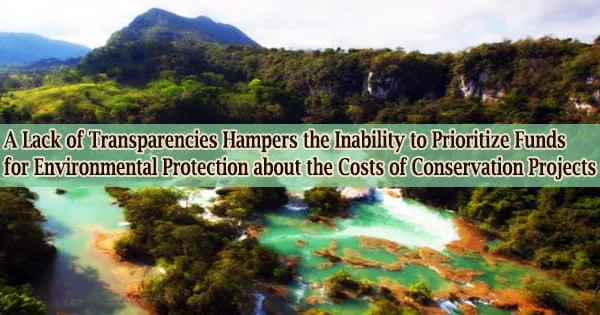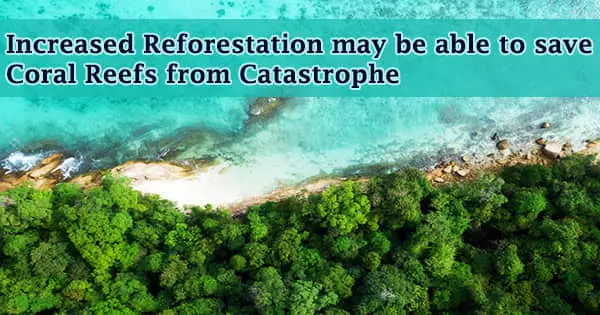Costs of conservation programs are rarely revealed, according to a new study, making it difficult for others to make decisions on the most cost-effective interventions at a time when financing for biodiversity conservation is severely restricted.
Only 8.8% of the 1,987 published papers on conservation initiatives included the overall cost of the intervention, and many of these were not detailed or standardized.
According to the authors, this makes determining the cost-effectiveness of various initiatives and making judgments on how to spend limited funds for biodiversity conservation extremely challenging.
The review was published today in the journal BioScience by experts from the University of Cambridge’s Department of Zoology. This is the first time cost reporting for a variety of animal conservation measures has been examined.
“If we’re serious about addressing biodiversity loss, knowing the financial costs of interventions is as important as knowing their effectiveness. But the cost of projects is rarely reported for others to benefit from,” said Thomas White, a researcher in the University of Cambridge’s Department of Zoology and the first author of the paper.
Dr. Silviu Petrovan, in the University of Cambridge’s Department of Zoology and a co-author of the study, added: “Wildlife conservation across the world is severely limited by funding, and the lack of information on the cost-effectiveness of different interventions makes it very difficult to prioritize where this money is spent.”
The research is part of Professor Bill Sutherland’s Conservation Evidence initiative at the University of Cambridge, which has amassed a vast database of scientific data on the success of various conservation approaches. It is intended to assist anyone who is making decisions on how to preserve and restore biodiversity.
The researchers assessed 1,987 articles in peer-reviewed publications and other reports indicating initiatives to conserve a variety of species and habitats for financial costs as part of this new review. Only 13.3 percent of those surveyed mentioned any financial costs.
Even when costs are reported, the lack of consistency between reports makes it difficult for others to work out whether a cost is relevant to their project or not. It’s frustrating because the people who implemented conservation projects probably do know how much they cost, it’s just that the information isn’t making its way into the scientific literature so others can benefit from it.
Professor Bill Sutherland
“Even when costs are reported, the lack of consistency between reports makes it difficult for others to work out whether a cost is relevant to their project or not,” said Professor Bill Sutherland in the University of Cambridge’s Department of Zoology, a co-author of the study.
He added: “It’s frustrating because the people who implemented conservation projects probably do know how much they cost, it’s just that the information isn’t making its way into the scientific literature so others can benefit from it.”
The review discovered that expenses were reported more frequently for certain types of interventions, such as those related to agriculture, which the authors believe is due to farming’s character as an income-driven activity.
Hedgerows or wildflower strips on farmland to promote wildlife, or pesticide applications to remove alien plants, for example, incur costs that farmers must consider into their operations and that are plainly observable.
Furthermore, costs for conservation projects in Africa were reported more frequently than in other regions of the world. This could be due to the fact that initiatives in African countries are more likely to be led by conservation organizations that must prioritize cost-effectiveness, according to the authors.
Researchers, publishers, and practitioners should describe the costs of conservation interventions in standardized formats, according to the authors, so that everyone contemplating a conservation initiative can make better decisions. They are currently working on a framework to make reporting these charges easier.
“There are some easy steps to be taken to fix this it’s just about creating a culture of reporting costs as part of reporting a conservation project and making sure those costs are in a format that allows others to understand how much it would cost them to implement a similar action in a different context,” said White.
According to the authors, there is a need to efficiently allocate resources in healthcare settings as well, but unlike in conservation, healthcare decision-makers have access to a developed body of work that collects and analyzes data on effects and costs.
Conservation intervention effectiveness can be difficult to assess since several aspects are involved, such as acceptability by local communities, practicality with available skills and equipment, and cost.
World leaders recognized the link between the global biodiversity catastrophe and the climate crisis at COP26 in Glasgow last year, and the important role that nature plays in both responding to and reducing climate change.
“We’re losing global biodiversity at an alarming rate it’s a real risk to society, and we need to be serious about reversing that trend. To do it will require unprecedented conservation action at a scale we aren’t yet achieving and we don’t have the finances for. So we need to be really careful about selecting the most cost-effective interventions with the money we’ve got,” said White.
















